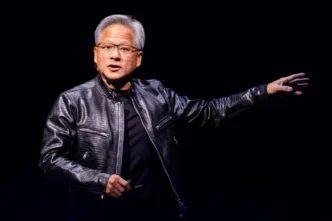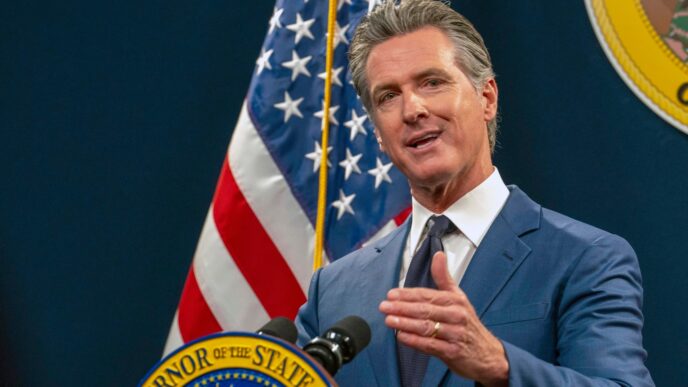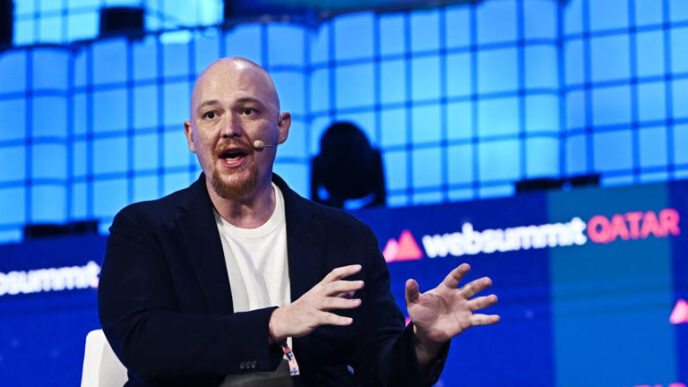Nvidia latest earnings report has pushed aside the usual talk about an AI bubble. The company posted record numbers in its third quarter, and the tone from CEO Jensen Huang showed clear confidence in where the market is heading. The results were stronger than Wall Street expected and painted a picture of a company still riding the center of the AI wave.
The company reported revenue of fifty seven billion dollars for the quarter. This marked a sixty two percent jump from the same period a year ago. Net income reached thirty two billion dollars, which was sixty five percent higher than last year. These numbers set a new record for Nvidia and made it clear that demand for its chips is still climbing.
Most of Nvidia’s revenue once again came from its fast growing data center business. That part of the company brought in more than fifty one billion dollars. This was twenty five percent higher than the previous quarter and sixty six percent higher year over year. The rest came from gaming and other smaller divisions. Gaming added four point two billion dollars, with the rest spread across professional visualization and automotive customers.
Colette Kress, Nvidia’s chief financial officer, told shareholders that the growth in the data center business came from the acceleration of computing and the rise of more powerful AI models. She said customers are building larger systems that rely on Nvidia chips. During the earnings call, she added that Nvidia announced AI factory and infrastructure projects this quarter that together represent about five million GPUs.
Kress said this demand now stretches across every type of customer. It includes cloud providers, sovereign governments, modern builders, global enterprises, and major supercomputing centers. She also noted that the company is seeing many landmark projects take shape at the same time. Each project shows how much the market for AI hardware has expanded.
A major part of this momentum is coming from the Blackwell Ultra GPU. Nvidia launched it in March, and it has become one of the company’s strongest product lines. Earlier versions of the Blackwell architecture are still seeing steady demand as well. Huang described the performance of the Blackwell family as far beyond expectations.
He said sales of Blackwell chips are off the charts. He also said that cloud GPUs are already sold out. Huang pointed to the continued growth of compute demand. He said training and inference workloads are both expanding at rapid rates. The company believes AI has entered a virtuous cycle where new models, new startups, and new use cases drive the need for more compute, which in turn fuels more growth.
Huang said the AI ecosystem is now growing across almost every industry and in nearly every country. He said AI is moving into every type of product and every type of workflow. In his view, the market is not slowing down. Instead, he believes it is accelerating faster than expected.
Still, not every part of Nvidia’s quarter was perfect. Kress noted that shipments of the H20 GPU were weaker than expected. Nvidia had built the H20 for generative AI and high performance computing, but geopolitical challenges kept the company from selling it in China. She said Nvidia shipped about fifty million units, which was far lower than planned.
She explained that purchase orders from China did not materialize. This was due to restrictions and the increasingly competitive local market. Kress said the company had hoped to ship more competitive data center products to China this quarter. She said the situation remains difficult. Even so, Nvidia plans to stay engaged with both the United States and China governments. She said the company will continue to advocate for America’s ability to compete globally.
Even with the slowdown in China, Nvidia expects growth to continue. The company forecast revenue of sixty five billion dollars for the next quarter. This number was higher than analysts expected and pushed Nvidia’s stock higher in after hours trading.
For Huang, the message was simple. He said concerns about an AI bubble do not match what the company sees. He said Nvidia sees rising demand from every direction. He also said that the nature of AI adoption has changed. In his view, the market is expanding, not cooling off.
Huang described the current moment as one where AI is moving into real production across industries. He said companies are no longer just experimenting. Instead, they are deploying AI systems at scale. He said this shift is fueling demand for advanced computing infrastructure, which Nvidia continues to lead.
Based on the numbers, the company is benefiting from this global push. From large cloud providers to sovereign governments, customers are racing to build systems that can support new AI models. Nvidia believes this trend is still in its early stages. With more large scale projects coming and more businesses adopting AI, the company expects demand for its GPUs to remain high.
The company’s position in the market remains strong. Competitors are entering the AI chip space, but Nvidia is still the preferred choice for many organizations. The Blackwell line is helping the company maintain its lead. Many early customers say the performance gains are significant enough to justify the wait times and high demand.
With the strong results and the upbeat forecast, Nvidia has pushed back against the idea that AI is overheated. The company believes the market has room for much more growth. Huang said that from Nvidia’s point of view, the industry is only beginning to understand what AI can do. He believes a long period of expansion is ahead.
The latest earnings report shows a company that continues to set new records. The demand for Nvidia’s data center products remains extremely high. The adoption of AI continues to spread across the world. And for now, Nvidia’s view is clear. The AI market is not slowing. It is accelerating.













